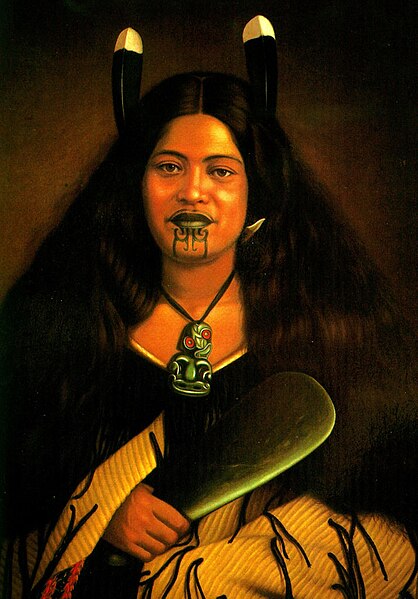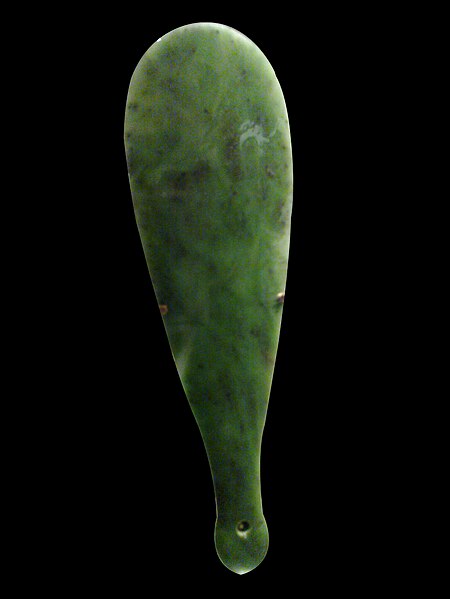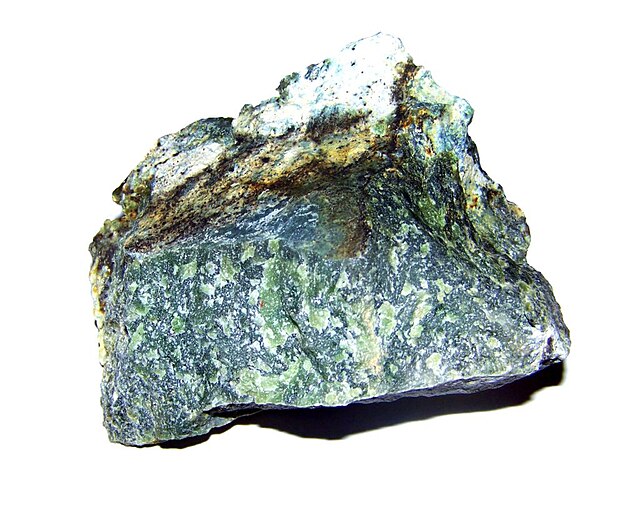The mere is a type of short, broad-bladed weapon in the shape of an enlarged tear drop. It was used to strike/jab an opponent in the body or the head, usually made from nephrite jade. A mere is one of the traditional, hand to hand, one-handed weapons of the indigenous Māori of New Zealand, and a symbol of chieftainship.
Pare Watene in 1878 holding a mere (by Gottfried Lindauer)
'Kataore', Mere pounamu (42cm x 12cm)
Māori chief holding a Mere weapon (1860–1879)
Nephrite is a variety of the calcium, magnesium, and iron-rich amphibole minerals tremolite or actinolite (aggregates of which also make up one form of asbestos). The chemical formula for nephrite is Ca2(Mg, Fe)5Si8O22(OH)2. It is one of two different mineral species called jade. The other mineral species known as jade is jadeite, which is a variety of pyroxene. While nephrite jade possesses mainly grays and greens (and occasionally yellows, browns, black or whites), jadeite jade, which is rarer, can also contain blacks, reds, pinks and violets. Nephrite jade is an ornamental stone used in carvings, beads, or cabochon cut gemstones. Nephrite is also the official state mineral of Wyoming.
Nephrite from Jordanów Śląski (Poland)
"Mutton fat" jade for sale at Hotan Jade Market
Large "mutton fat" nephrite jade displayed in Hotan Cultural Museum lobby.
Nephrite from Wyoming







